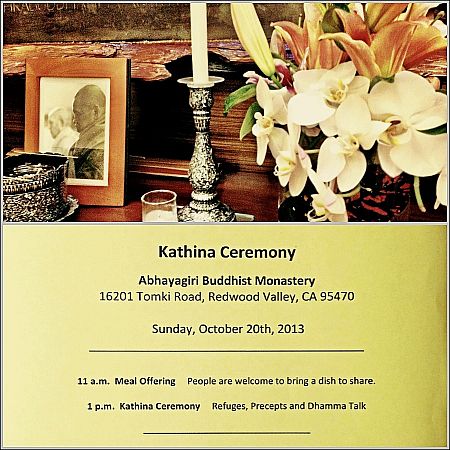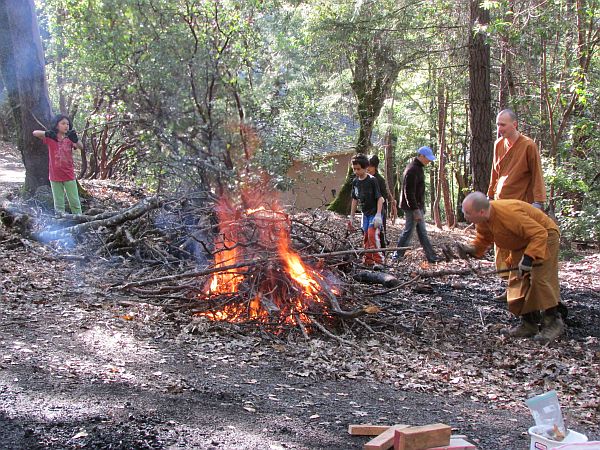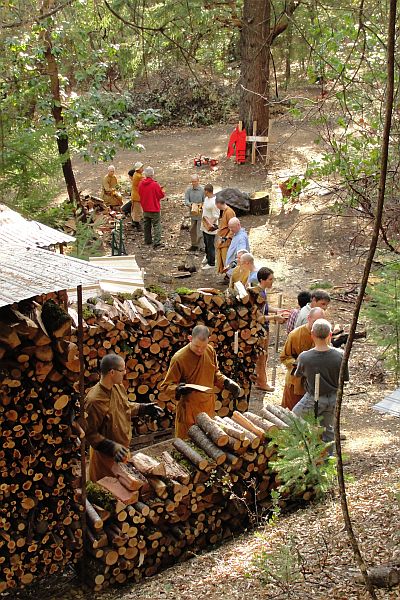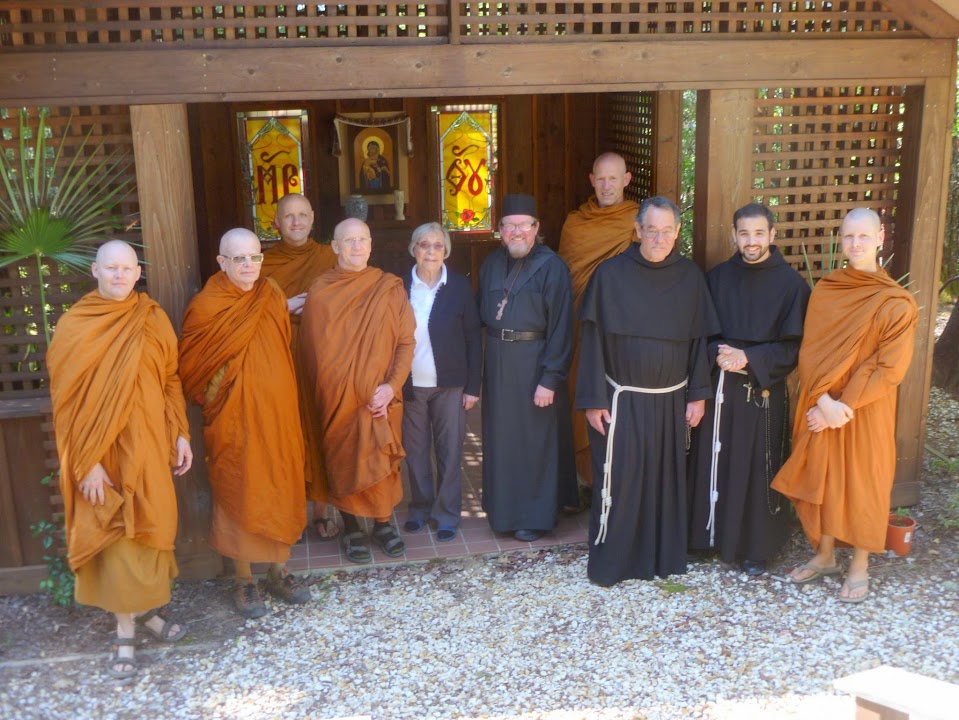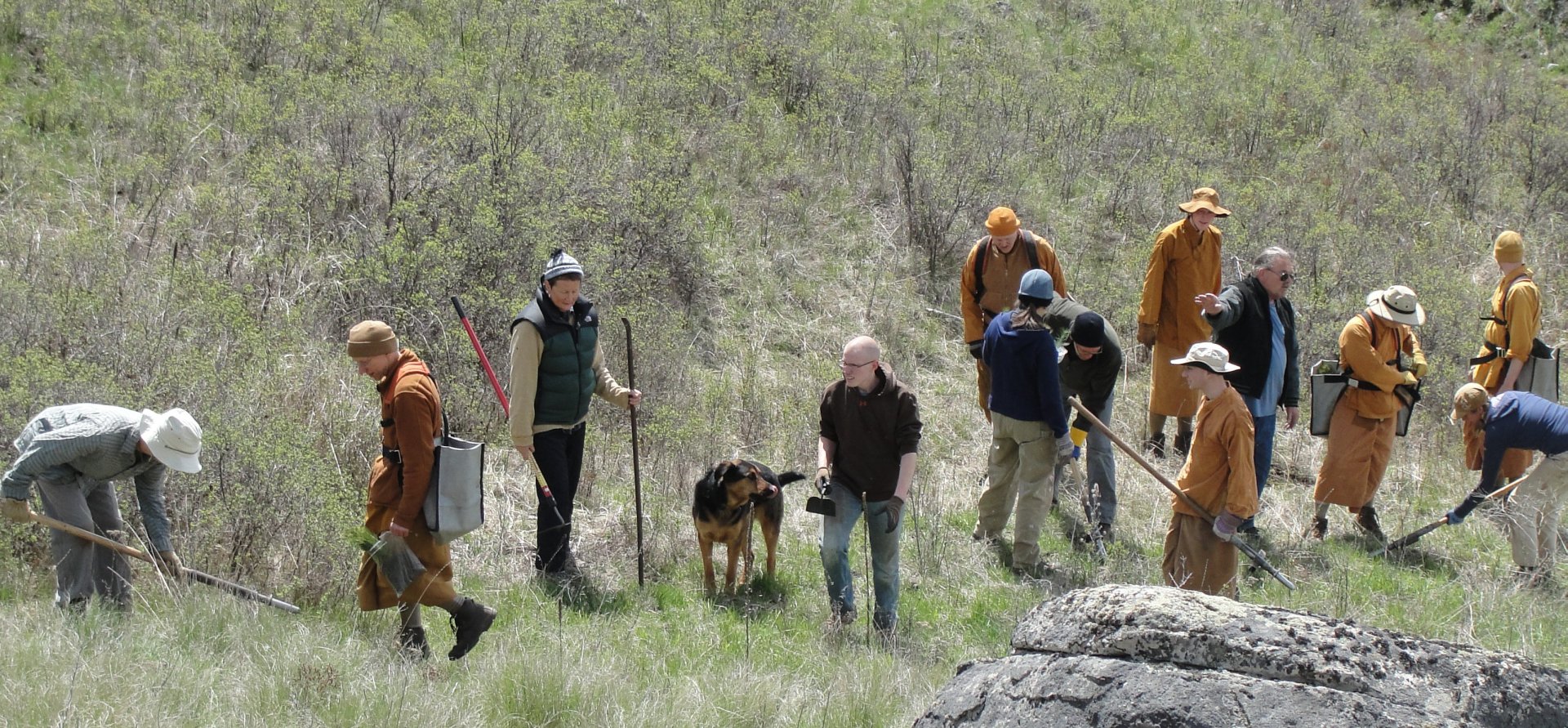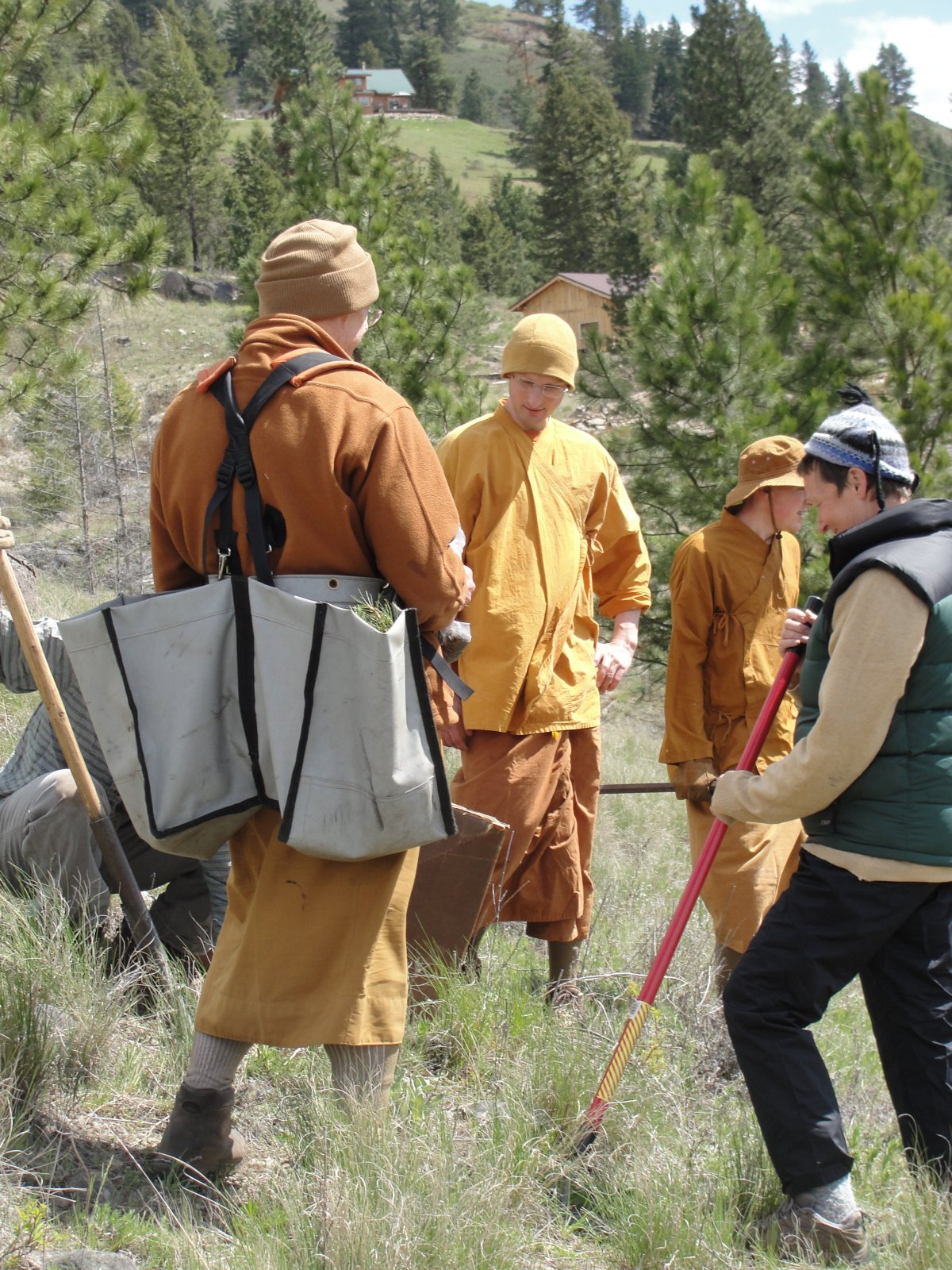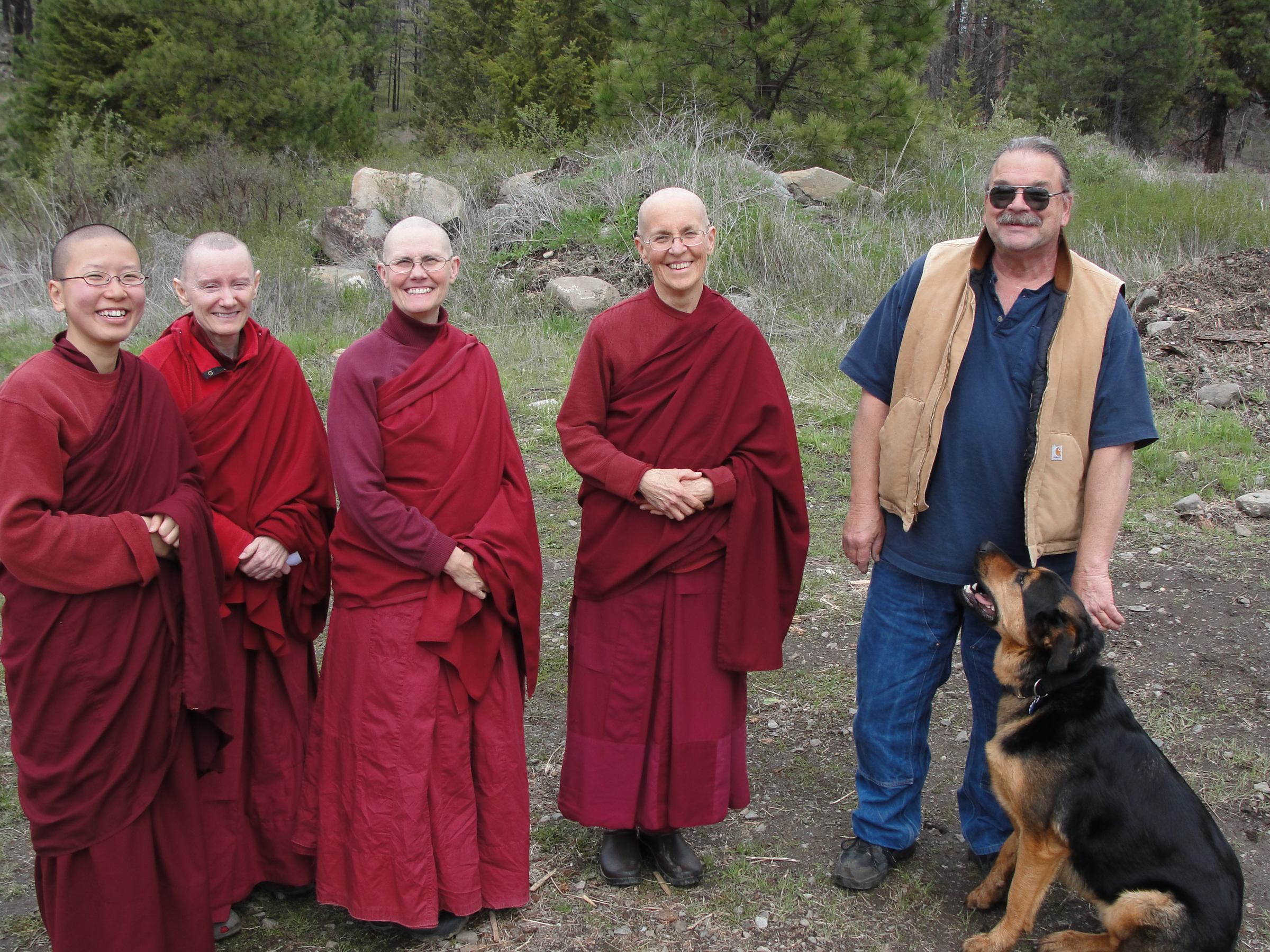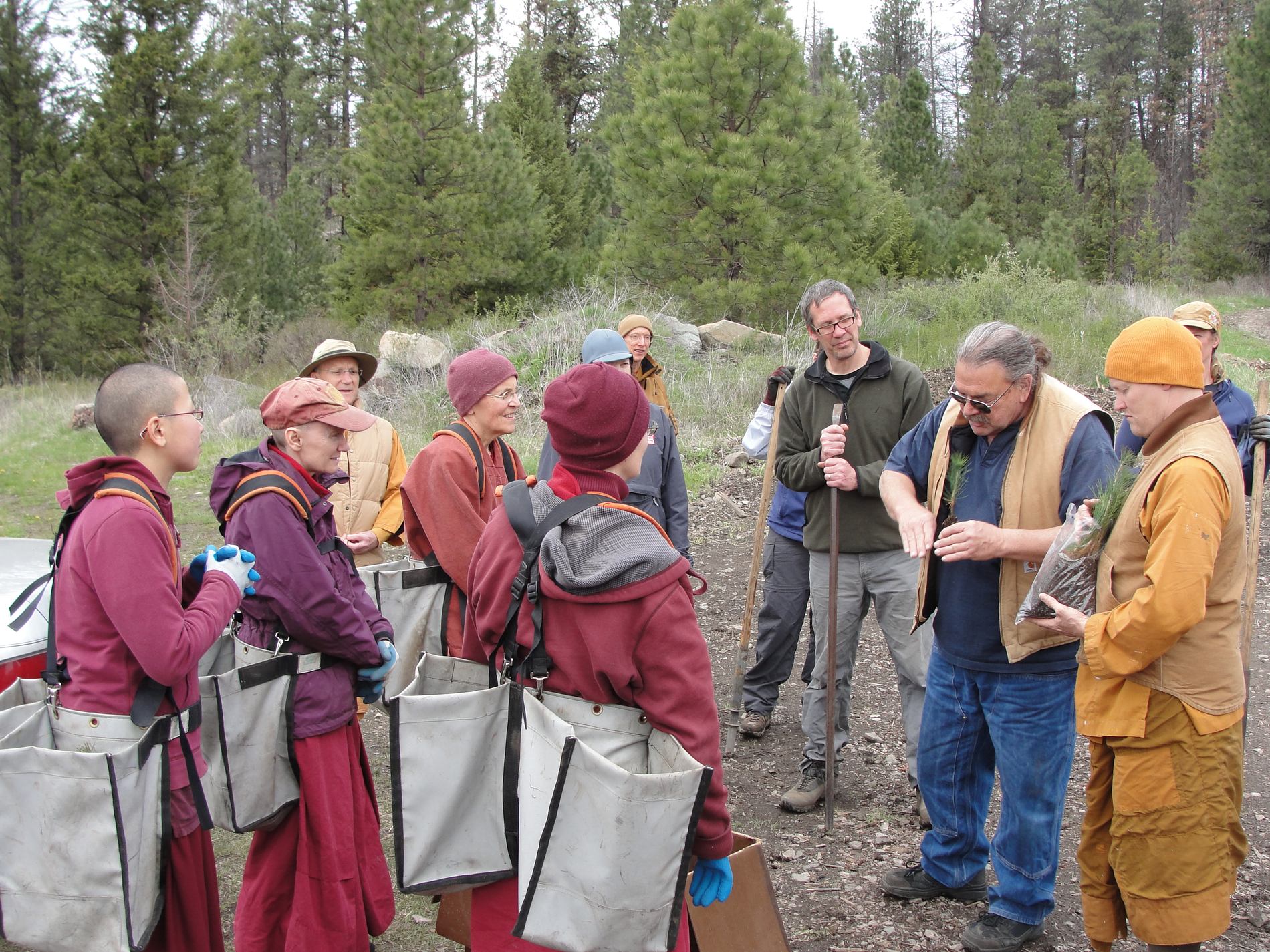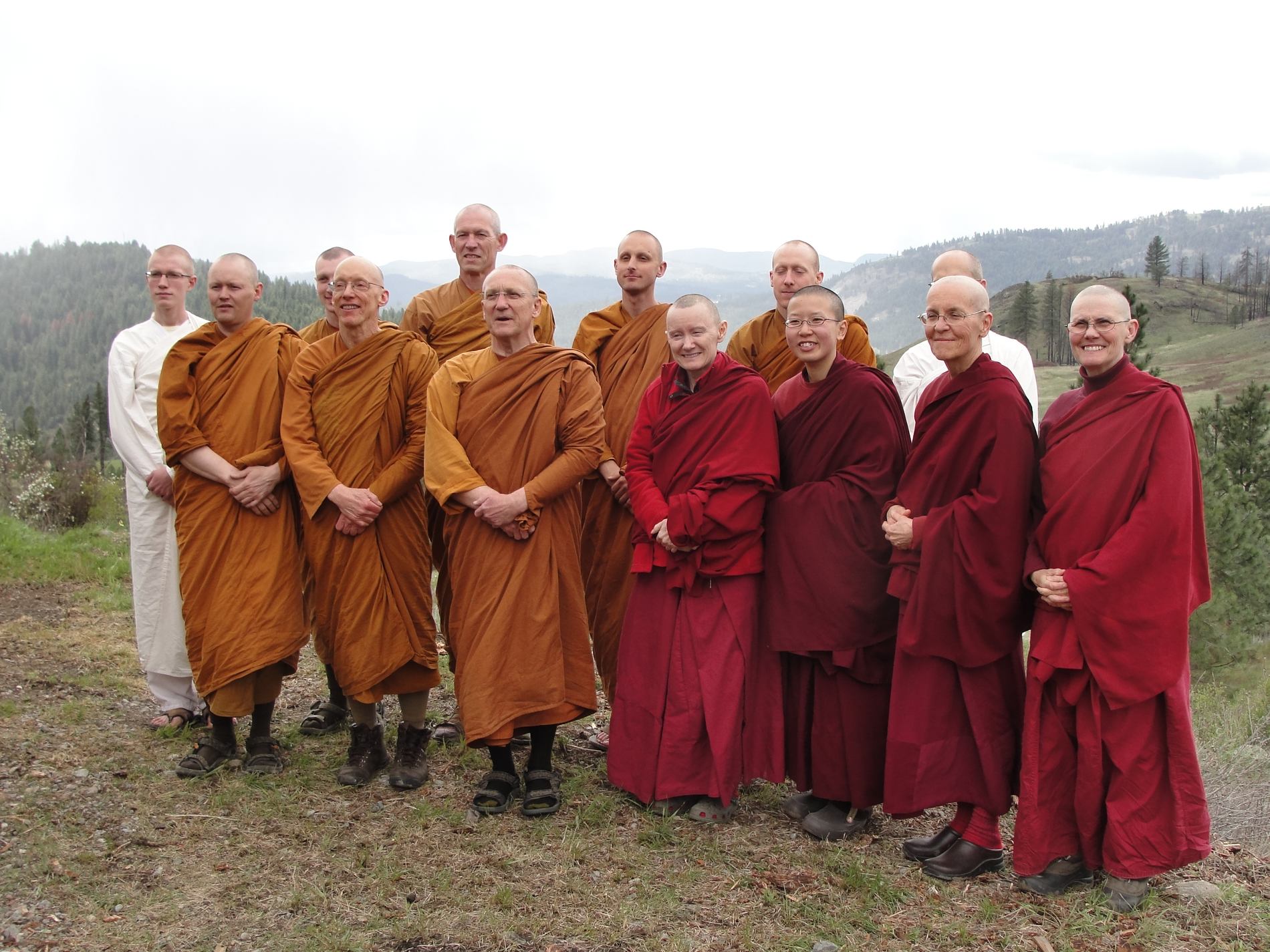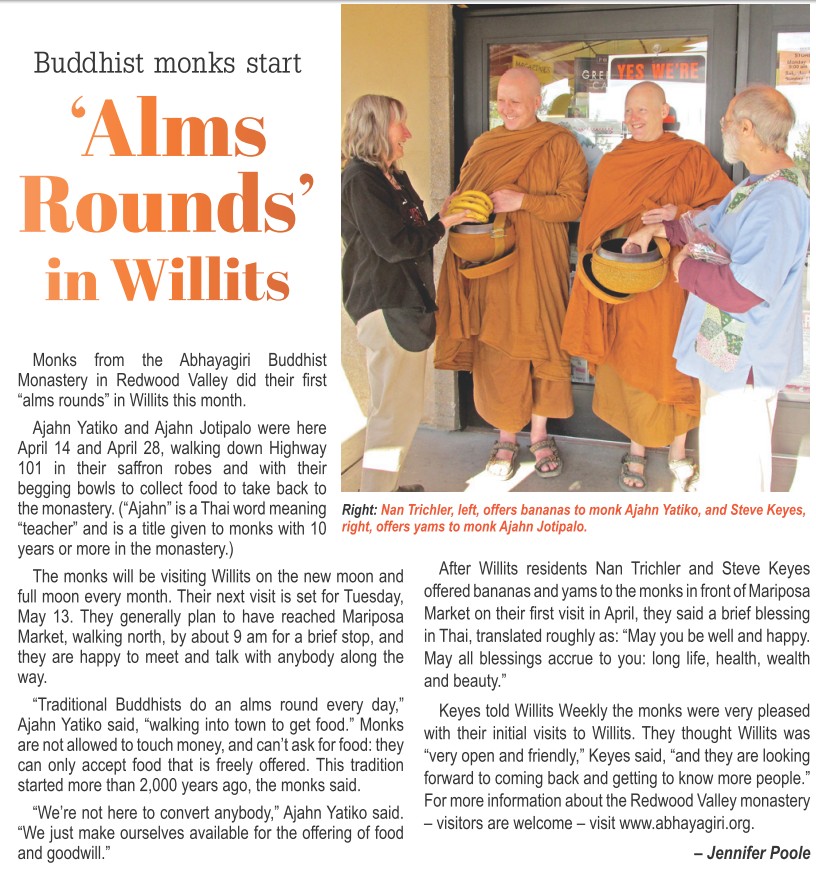Sometime during the afternoon of the last Sunday of September, a rolling community of bicyclists and supporting volunteers will stream up Tomki Road and arrive at Abhayagiri Buddhist Monastery. For at least a week before these dusty, lycra-clad pilgrims dismount from their bicycles, the monastic community will have been preparing for their arrival—discussing logistics, setting up canopies, and finding a role for each community member to support the effort.
The day itself when the bicycle pilgrims arrive will be busy. Word will have gone out amongst the monks that this is not a time for solitude and retreat but rather for active engagement with the visitors. If the afternoon is hot, junior monastics may greet the riders with a fine mist of cooling water from hoses. Then the pilgrims will freshen up and gather for the weekend’s closing ceremony and the final Dhamma talk of their spiritual journey before returning to their homes in the Bay Area.
So will end the 12th annual Buddhist Bicycle Pilgrimage (BBP). The pilgrimage is a two-day, 135-mile journey by bicycle from the Bay Area. It begins early Saturday morning at Spirit Rock Meditation Center in West Marin with opening ceremonies; travels on to Sae Taw Win II Dharma Center for lunch and teachings; and pauses for the evening at the KOA campground near Cloverdale, with dinner, meditation, and a Dhamma talk before the night’s rest. The following morning the pilgrims ride north into Mendocino County en route to the City of Ten Thousand Buddhas for lunch and a tour, and then continue on to Redwood Valley and their final destination, Abhayagiri.
At each of these stops, the pilgrims meditate and hear Buddhist teachings related to the annual spiritual theme of the pilgrimage (the 2013 theme being “generosity” or dana). In between, the volunteers, many of whom have also ridden their bikes in previous pilgrimages, provision rest stops and offer the cyclists physical and psychic nourishment as well as technical assistance. Over the years, Abhayagiri monastics have also accompanied the riders in the monastery minivan, stopping at each rest stop to offer encouragement and good cheer and later leading the Saturday evening and Sunday morning meditations at the campground.
“Just seeing so many people come together to create this event has been a wonderful experience,” says Ajahn Jotipalo, who has been part of each of the first 11 bicycle pilgrimages. “To see all this happen with almost complete harmony and good will is amazing.”
Renee Rivera rode the pilgrimage in its second and third years and plans to ride again in 2013. She says, “I’m part of a community of people who both bike and practice Buddhism, so there seems to be a connection.” Renee, who spent part of her girlhood in Redwood Valley and now heads the East Bay Bicycle Coalition, has been practicing and learning about Buddhism for more than a decade. She first heard about the bike pilgrimage at Abhayagiri’s “First Tuesday” meditation group in Berkeley. “Biking to get around always brings me into the moment. I’m out in the world, I notice things, I feel connected to the landscape that’s underneath the urban landscape. Those things feel connected to my meditation practice. In a way, bicycling is a kind of rolling meditation.”
How It All Began
Since the pilgrimage’s inception in 2002, Abhayagiri has been the goal and end point for the ride. In a sense it was also the ride’s starting point.
The ride began as the brainchild of upāsakā Dennis Crean, who traveled frequently between Berkeley and the monastery before he moved permanently to Redwood Valley in 2002. Dennis first thought he would map out a weekend ride from the Bay Area to Abhayagiri for himself and a friend. Somehow the idea mushroomed to include dozens of new friends. Over the course of a year, while he was also rehabbing his new home, Dennis drove, then cycled, every section of his proposed ride, negotiated with rest stop hosts, connected with Buddhist monasteries and centers along his proposed route, and worked through all the complex logistics of a multi-day ride. His efforts resulted in the template for the bike pilgrimage that, with slight annual adjustments, is used to this day. Dennis now serves as the “spiritual coordinator” of the ride, the person who suggests the meditation theme for each year’s pilgrimage.
“For people who are mostly there as cyclists,” Dennis observes, “this ride may give them a different perspective on a cycling community, like riding at a slower pace or with a different intention, being in the present moment and looking out for each other. In a longer-term sense, for people who are newly curious about meditation or Buddhism, it’s often their first time to visit the spiritual centers on our route, so they learn more about who and what is out there.”
Carrying on the Tradition of Dana
During his initial planning for the ride, Dennis relied heavily on the monastery for guidance and material and moral support. Abhayagiri was the fiscal sponsor for the ride in its first year, before passing on that responsibility the next year to the newly formed nonprofit Dharma Wheels Foundation, which now organizes logistics and coordinates the ride.
More importantly, Abhayagiri profoundly shaped the ethos of the ride. Having ridden and been inspired by a large AIDS fundraising ride, Dennis first thought the BBP ride might also function as a formal fundraiser for Abhayagiri, with riders gathering pledges of support from family and friends. But after some deliberation, the monastery decided that that was not their way. As a result, since its inception, the BBP has followed the tradition of dana. There are no fees or minimum donations required of riders. Instead, the costs of the event are covered by voluntary donations from riders and volunteers alike. And at the end of the weekend, leftover food and all remaining funds are offered to the four centers that have provided spiritual guidance for the ride.
“In our tradition, we undertake something called tudong,” explains Ajahn Jotipalo. “We walk on faith, without carrying any money or food, and pay respects at holy spots or seek out teachers. This pilgrimage has that element as well. The bicycle pilgrims are setting out on faith, and the organizers rely on donated food for the rest stops and don’t charge the riders. The riders have to make the effort to do the journey, and it is unknown what will happen. Something that’s neat about tudong are the strong bonds we make with the people we’re walking with or whom we meet on the road. This pilgrimage gives a taste of that as well.”
Connecting with Abhayagiri
Both Dennis and Ajahn Jotipalo see the BBP as offering a kind of invitation for pilgrims to become more connected with Abhayagiri and the other spiritual centers they visit.
In 2007, while still a layman, Venerable Kovilo saw the ride as exactly that kind of invitation and jumped on it. “When I heard about the bicycle pilgrimage, I already had a strong inclination to ordain and had heard good things about Abhayagiri. But I had never even visited the place before and didn’t own a car to get there. So I thought I would just show up at Spirit Rock the morning of the ride with my regular street bike and do the 140-mile trek to Abhayagiri, no problem. A week or so before the event, I realized I wasn't really in any kind of shape to ride that far, so I decided instead to help drive a support vehicle and do odds and ends helping out however I could along the way. Once I’d arrive at Abhayagiri, I figured that, whatever the conditions were, I would just be with it and hopefully they would let me ordain.”
Not every pilgrim has leapt toward life as a monk at Abhayagiri, but as Ajahn Jotipalo says, “Just having this little bit of invitation means somebody might come to the monastery who otherwise would never visit here. And once they’ve seen ‘Oh, those monks are really quite normal,’ they might have a stronger impulse to come back again in the future.”
For more information about the 12th annual Buddhist Bicycle Pilgrimage (or to join as a cyclist or volunteer), visit www.dharmawheels.org.
Alden Mudge lives in Berkeley and first rode in the BBP back in 2002.
